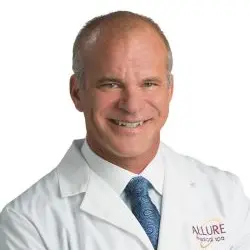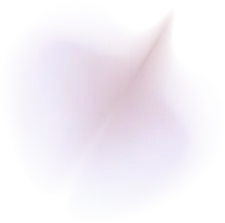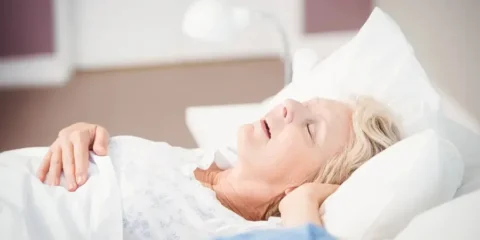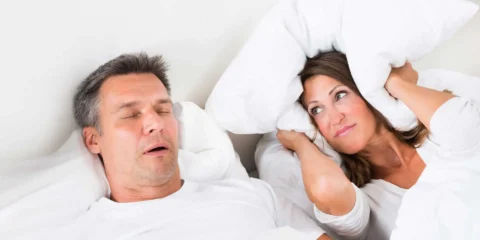Is snoring bad for your health?
Snoring can be annoying for the bed partner, and unknown to the offender.Other than the offensive sound of snoring, why worry?
Sleep apnea is a major cause of aging, and is grossly underdiagnosed.Sleep apnea, specifically obstructive sleep apnea is a condition where the individual stops breathing or the flow of air into the lungs is impaired for at least 10 seconds 5 or more times per hour.
Here are some of the health effects of untreated sleep apnea:
- Weight gain
- Diabetes
- Cardiovascular disease
- Certain cancers
- Depression
- Daytime sleepiness
- Auto accidents.
What causes snoring?
Generally, snoring is caused by a narrowing of your airway caused by relaxation of the roof of your mouth and tongue, which narrows the air passage.The air then vibrates your tissues and causes the snoring sound.
What causes sleep apnea?
The same cause as snoring for most people but apnea results in a lack of airflow that eventually causes slight arousal so that your airway opens back up so you can get oxygen.Because of this repeated interference of airflow that leads to arousals (not quite awakening in most cases) restorative sleep is reduced.It is believed that this reduction of restorative sleep leads to not only daytime fatigue but also health deterioration.
Is sleep apnea serious?
Mild sleep apnea, defined as 5 to 15 events per hour is associated with some health deterioration, whereas severe sleep apnea, defined as 30 or more events per hour is associated with a 3 times increase risk of dying in the next 20 years.Yes, it is very serious.
How common is sleep apnea?
This question has been asked by scientists for decades, and the answer keeps changing.The changing answer is not caused by poor data, but is caused by two factors:
1:in the last 40 years (since the first major study of the incidence of sleep apnea in the general population was done) we as a society have gotten heavier.There is a clear link between sleep apnea and obesity.Sleep apnea leads to obesity.Obesity leads to sleep apnea.
2:The criteria to define sleep apnea have changed.In 2012 the American Academy of Sleep Medicine redefined sleep apnea as having 5 or more events per hour with a 10-second interruption of airflow and a 3% reduced blood oxygen level as clinically meaningful sleep apnea.The prior criteria had been a 4% reduction of blood oxygen content.
In the 1980’s a randomized study of employed people ages, 30-60 found that 9% of women and 24% of men had mild to severe sleep apnea as defined by Apnea-Hypopnea Index (AHI) 4%.The AHI is the score we use to grade sleep apnea severity.
In 2015, a randomized study using the 2012 criteria of AHI 3% found that 60.8% of women and 83.8% of men had sleep apnea (AHI 3% of 5 or greater).This study was done in Switzerland and the participants were an average age of 60 (vs 30-60 years old in the Wisconsin study) and used the lower threshold of 3% (vs 4%) decrease of oxygen in the blood.
There have been numerous studies trying to identify the prevalence of sleep apnea, and there is disagreement as to what constitutes clinically significant sleep apnea.
Experts (American Academy of Sleep Medicine) consider AHI 3% of 5 or more events per hour to be clinically meaningful and treatment should be guided based on the AHI score and the clinical picture.For example, someone with a score of 7 (AHI 3% of 7 events per hour) and high blood pressure should be treated (we will get into treatment shortly) to improve their health and longevity.
Insurance companies (especially Medicare) do not agree with the experts and feel that a more stringent score of AHI 4% is used, so they would not pay for sleep apnea treatment in the above setting if the AHI 4% was 4.5 and the AHI 3% was 7.We know from clinical studies that this decision by the government and many insurers is bad medicine, but it is about the money .
The simple answer is sleep apnea is grossly underdiagnosed, insurers don’t want to pay for testing or treatment if they can get away with it, and undertreatment of sleep apnea is costing the US billions of dollars annually.
$149.6 Billion is wasted annually in the USA due to undiagnosed and treated sleep apnea.
This is the annual cost of following the rules of insurance companies (by not screening everyone), by lack of physician awareness, and by lack of a focus on the impact of untreated sleep apnea. A research firm, Frost and Sullivan, was commissioned to determine the impact of untreated sleep apnea. They found the number was staggering.They also found that we spend $12.4 billion annually diagnosing and treating sleep apnea which is 10 times less than the money wasted (unnecessary poor health outcomes, car accidents, etc.) by ignoring the problem.
Diagnosing obstructive sleep apnea has never been easier.
Technology has hit the sleep world.The traditional testing involved going to a sleep lab that may be in a hospital and being hooked up to sensors and an observer watching you sleep.
Newer technologies allow you to wear a sensor in your bedroom, and the accuracy of these sensors in diagnosing sleep apnea is almost as good as a complex, uncomfortable, expensive sleep lab.
The two technologies that are leading the pack are WatchPAT https://www.itamar-medical.com/ and Night Owl https://nightowl.care/
Treating sleep apnea has never been easier.
The traditional gold standard is a CPAP which is a machine that you are hooked up to at bedtime.The CPAP pushes air into your lungs and allows better sleep, more restorative sleep, and reverses many of the health conditions that are associated with sleep apnea.
But most people diagnosed with sleep apnea don’t regularly use their CPAP machine for a variety of reasons.They are bulky, noisy, uncomfortable, and not easy to get used to.
ApneaLase™ treatment to reduce or reverse the cause of apnea and snoring.
ApneaLase™ is a laser treatment that can reduce or eliminate obstructive sleep apnea in most people.
ApneaLase™ is based on the NightLase® technology that was originally developed to treat snoring.This is an FDA-cleared laser for the treatment of the tissues of the airway that cause apnea and snoring.
ApneaLase™ is not covered by insurance while CPAP machines or a $40,000 surgery called Inspire https://www.inspiresleep.com/ may be covered.
For individuals who can tolerate a CPAP, or those who are ok with an implantable device that goes into the chest and hooks up to the nerves in your throat (Inspire) these are your best options as they are widely available and may be covered by health insurance.
ApneaLase™ is suitable for individuals who would like to reverse or reduce their apnea (and or snoring) by treating the underlying cause.The results are guaranteed, unlike CPAP and surgery.Call if you are interested in seeing if you are a candidate for ApneaLase™









